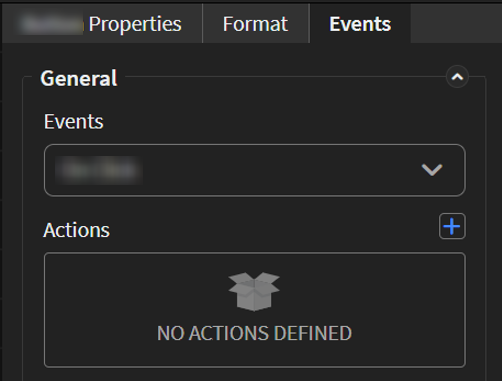Adding a Barcode Widget
About this task
Use the Barcode widget to request the device's camera to scan and read information delivered through a barcode.
Procedure
- In the Canvas, open the Widgets tab.
-
Double-click or drag and drop the Barcode widget onto the app canvas.
The Barcode Properties panel displays its sections on the right.
-
In the General section, set the following fields:
- Enter an ID and Barcode Name for the widget or keep the defaults.
- Optional: Enable the Field Label toggle if you like to enter a custom label for this widget using the Text field box.
- Optional: Use the Display text field to give hint text indicating the type of content to enter in the text box. The display text disappears when the user makes a selection.
-
In the Scan Setting section, set the following
fields:
- In the Text Formatting section, change the default formatting settings for text.
-
In the Widget Alignment section, choose how you want to
align your widget in the app.
- Align Left
- Center
- Align Right
- Optional:
In the Rules section, add a requirement rule to the
widget.
Use requirement rules to specify whether the app user must configure this widget or can skip it.
- Select Requirement Rule to open the Set Requirement Rule dialog box.
- Select whether the requirement rule requires meeting all or any conditions.
- From the Field list, select an app field or variable and an operator. Enter the value required for the widget to be visible.
- Select Add Condition to add another condition.
- Select OK to save.
- Optional:
In the Rules section, add a visibility rule to the widget.
Use visibility rules to control when a widget is visible to the app user. For example, you can create a condition that a widget should only appear after the app user fills in a field or submits a form.
- Select Visibility Rule to open the Set Visibility Rule dialog box.
- Select whether the visibility rule requires meeting all or any conditions.
- Select an app field or variable and an operator from the Field list. Enter the value required for the widget to be visible.
- Select Add Condition to add another condition.
- Select Save.
- Optional:
In the Miscellaneous section, decide which name you want
to appear in the widget report.
The Same as widget name setting is the default selection and automatically uses the widget name as the chart title. To choose your own chart title, clear the option and enter a new name.
You may use special characters except for
%&<>{}*|^and double spaces. - Move to the Format tab to customize the widget's appearance.
- Optional:
Add an OnScan event and applicable actions to the widget. Events are activities
that you can set to trigger an Action. When the app user scans a barcode or QR
code, SOTI Snap triggers the OnScan event.
Important: Due to the complex combinations available to use, the following steps are guidelines only. You'll need to replace the listed events and actions with your own to suit your app's needs.
Learn more about the available events and actions at Events and Actions.
-
Select Save in the SOTI Snap
banner to apply your changes.

Results
Tip: Select Preview to see how the widget
appears in your app.
